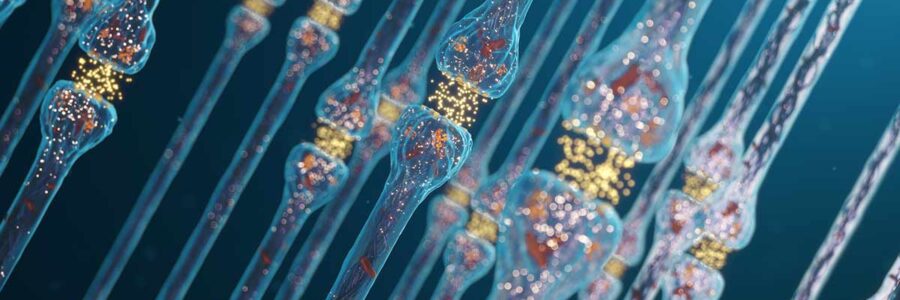Cellular energy might sound complicated, but understanding the basic principles is quite straightforward, and it is essentially the foundation of good health. This article will explore how cellular energy production and metabolism work and focus on how you can restore your cells’ ability to produce energy effectively.
What is Cellular Energy?
The trillions of cells that make up your human body require energy to survive, repair themselves, and respond to environmental stimuli. Cellular energy is essentially the ability of your cells to take in food and air and convert them into usable energy to function. We must perform almost everything we do, from sneezing and digesting to walking and blinking. This energy is also required for the cell to self-repair, a fundamental pillar that ensures you don’t develop diseases like cancer.
What Produces Energy in the Cell?
Those trillions of cells that constitute your body are powered by mitochondria that reside inside the cell. Mitochondria are like power plants that convert the food we eat and the air we breathe into ATP, the type of fuel that our body requires to power up our cells (and, therefore, our whole body). Every cell requires an incredibly high amount of ATP to function properly, and therefore for our bodies as a whole to function properly. Scientists estimate that ten million ATP molecules per second energize a single human brain cell!
This might seem like a lot, but a healthy cell with the proper building blocks makes more than enough ATP to thrive. It actually generates an ATP surplus, which helps heal the cell. This self-repair mechanism ensures that your DNA is properly intact before the cell undergoes cell division. When multiplied, healthy DNA means repair and regeneration (of skin, tissues, etc.), and damaged DNA when multiples mean illness (cancer, tumors, etc.).
What is Cellular Metabolism?
Cellular metabolism is the collection of chemical reactions in your body to convert things like food and air into available ATP to fuel the cell. Cellular metabolism requires complex sequences of specific biochemical reactions, better known as metabolic pathways. Cellular metabolism gives life to the cells and enables them to grow, repair damage, and respond to environmental changes.
Oxidative Stress
When the mitochondria inside our cells produce energy, they also produce a waste product called free radicals. If the car is the cell, and the engine is the mitochondria, then the exhaust fumes are the free radicals. These volatile compounds can cause a lot of damage to the cell if not neutralized by antioxidants. When there are not enough antioxidants to counteract the free radicals, the damaging effects are oxidative stress.
Oxidative stress correlates to almost every health condition known to man and is a major contributor to premature aging. As the damage increases with age and is compounded by environmental stressors, oxidative stress wreaks havoc on our mitochondria, cell membranes, and even DNA. Reducing oxidative stress (living a healthy lifestyle) is a key part of unloading the burden on your cells, but restoring cellular energy production is truly the key to ensuring your mitochondria can function optimally.
Restoring Cellular Energy Production
Restoring cellular energy production is an integral part of healing because it gives the cell the strength to heal. To restore cellular energy, we need to boost ATP, which can be done by increasing the mitochondria’s output or producing more mitochondria.
Method 1: Increase Amino Acid Intake
Amino acids are the building blocks of protein. When free radicals circulate in the body, they can break the bonds that hold these proteins together, which wreaks havoc on the body. Broken protein bonds mean damaged DNA, impacting our skin, muscles, blood, and every vital organ when these damaged cells begin to divide and multiply, which causes cell death and disease.
Method 2: Produce More Mitochondria
If increasing amino acid intake adds wood to the fire, producing more mitochondria is lighting entirely new fires (or new energy factories). This is a process called mitochondrial biogenesis. The mitochondria are where the energy is produced; therefore, if our cells have more mitochondria, we can produce more energy.
For example, athletes have more mitochondria per cell than non-athletes and can produce much more energy. The opposite is also true: sick people and people with chronic inflammation have far fewer mitochondria than the average person and far less cellular energy, even for basic functions. This leads to many of their symptoms, including sensitivities, and is why they do not respond to what would be effective treatments.
By increasing your cell’s ability to absorb amino acids, you also increase its cellular energy. Two products that can help you achieve a boost of ATP in the cell and increase the absorption of amino acids are GCEL and eNRG by Systemic Formulas. You can see this method as adding more wood to the fire to keep it burning. This energy is not to be confused with an energy product that stimulates you like a cup of coffee. These products take time to build true lasting energy that the cells can use to function and restore your body’s natural ability to create energy from within. This means more energy in the daytime and deeper, more restful sleep.
Summary
Your cells are energized by factory-like machines inside them called mitochondria, which turn your food and air into ATP. Having an abundance of ATP allows the cells to perform their function, self-repair, and regenerate. Without enough ATP, cells die or multiply damaged DNA, resulting in severe illness. To generate more ATP (cellular energy), you can increase amino acid intake (which fuels the fire), and you can generate new mitochondria (which is like building new energy factories). Products like GCEL and eNRG work with your cells to enhance mitochondria and amino acid absorption, which enables your cells to create more ATP and function properly.


